The Eastern Province of Sri Lanka is a realm of untouched beauty, where nature’s splendor and cultural richness collide in an unforgettable embrace. Stretching from the golden shores of Trincomalee to the lush heart of Batticaloa, this region is a living tapestry of vibrant landscapes and profound history. The sun-kissed beaches, kissed by the Indian Ocean, are a paradise for those seeking serenity and adventure alike, with turquoise waters lapping against powdery sands that seem to stretch on forever.
Trincomalee, a city steeped in ancient heritage, stands as a testament to centuries of history; its natural harbor one of the most beautiful in the world. The sacred Koneswaram Temple, perched high above the cliffs, whispers tales of devotion and reverence, its spires reaching for the heavens.
Further south, Batticaloa enchants with its tranquil lagoons, woven with quaint fishing villages where time moves slowly, and life dances to the rhythm of the tides. The peaceful vistas of the Eastern Province offer a sense of untouched wonder, a stark contrast to the bustling cities of Sri Lanka, making it a hidden gem for those with a thirst for the authentic and the extraordinary.
This is a land where the past and present coexist in harmony, where every corner tells a story, and where the spirit of Sri Lanka’s natural beauty is boundless.
… Read moreColombo
GMT +5 1/2 hours
Srilanka rupees

Colombo 10 1/2 hours
Sinhalese, Tamil and English are also widely spoken,
Trincomalee: The Jewel of the East
Trincomalee, with its deep natural harbor and stunning beaches, is not only a haven for beach lovers but a site steeped in history. The ancient Koneswaram Temple, perched majestically on Swami Rock, offers a glimpse into the region's rich religious past, dating back over 2,000 years. The temple’s intricate Dravidian architecture, with its towering gopurams (gateway towers), stands as a testament to the region's devotion and architectural brilliance. As you stand on the rocks, overlooking the vast ocean, you can almost hear the whispers of ancient sailors and kings who once navigated these sacred waters.
Trincomalee has been a key strategic location for centuries, with its sheltered harbor used by ancient seafarers. The Koneswaram Temple, dedicated to Lord Shiva, has been a place of worship for millennia, reflecting the region's deep religious roots. The town was historically important during both the colonial period and earlier, serving as a naval and trade hub for the Portuguese, Dutch, and British. The sacredness of the location also made it a focal point for many religious and historical figures over the centuries.
The Koneswaram Temple’s architecture is a magnificent example of Dravidian style, with intricate carvings and towering gopurams that dominate the skyline. The temple’s vibrant colors and detailed sculptures capture the spiritual essence of the region. The site offers a stunning panoramic view of the Indian Ocean, adding to the temple’s mystical aura.

Batticaloa Fort: A Legacy of Colonial Power
The Batticaloa Fort, built by the Portuguese in the 17th century, embodies the power struggles and colonial history of Sri Lanka. The fort, with its distinct European-style architecture, offers a glimpse into the island's past, where the Portuguese, Dutch, and British once vied for dominance. The fort's imposing walls and ancient cannons stand as silent witnesses to centuries of conflict. Today, it’s a place of quiet reflection, where visitors can walk through time and experience the echoes of colonial power that shaped this beautiful coastal town.
Batticaloa Fort was constructed by the Portuguese in the 1600s and later modified by the Dutch and British. The fort played a key role in protecting the coastal area and controlling trade routes. Over the centuries, it witnessed numerous battles and political changes, marking it as a symbol of colonial dominance and the turbulent history of Sri Lanka’s eastern coastline.
The fort’s architecture is a blend of European military design and local influences, featuring thick stone walls, arched gates, and a large, open courtyard. The fort’s defensive structures, such as its cannons and bastions, are still visible, giving visitors a sense of its military importance. The fort’s relatively well-preserved state allows visitors to immerse themselves in its colonial past.

Pasikuda: A Historical Paradise
Pasikuda, known for its calm, turquoise waters and golden beaches, is not just a haven for relaxation but a place rich in historical significance. Once a bustling trade port under the Portuguese and Dutch, Pasikuda’s coast was vital in Sri Lanka’s colonial past. The remnants of ancient Dutch and Portuguese settlements can still be seen in the area’s architecture and ruins. The peaceful beaches now mask the stories of bygone eras, where traders, soldiers, and explorers once wandered beneath the same sky that now shines over this tranquil paradise.
Pasikuda has long been a strategic coastal location, with its natural harbor attracting traders and colonial powers. The area was an important port for both the Portuguese and Dutch, playing a key role in the trade routes across the Indian Ocean. The remnants of colonial architecture and settlements serve as a reminder of its significance during Sri Lanka’s colonial period.
Pasikuda’s architecture blends colonial influences with local designs, reflecting its history as a site of both cultural exchange and conflict. Ruins of old forts, churches, and colonial settlements dot the landscape, offering a glimpse into the past. The area’s traditional buildings, with their simple, yet functional design, add to the historical charm of the coastal region.

Pottuvil Point: A Beach with Stories to Tell
Pottuvil Point is not only famous for its untouched beaches but for its rich history as a strategic military location. The ancient Buddhist temples here have stood the test of time, their crumbling walls holding stories of centuries past. Known for its role during the colonial era, Pottuvil was a key point for trade and defense. The blend of natural beauty with historic significance makes this place a true testament to Sri Lanka’s diverse heritage. As you walk along the shores, the whispers of history seem to rise with the waves, beckoning you to explore its past.
Pottuvil’s location made it an essential site during the colonial era, where it served as a point of trade and military defense. The area was also historically important for Buddhist worship, with several ancient temples dedicated to preserving the region’s spiritual heritage. Throughout Sri Lanka’s colonial history, Pottuvil played a role in both local defense and global trade.
The ancient Buddhist temples at Pottuvil Point, while weathered by time, still stand as symbols of the region’s spiritual past. The temples feature traditional Sri Lankan architecture, with simple yet graceful structures designed for peace and contemplation. Alongside these temples, remnants of old military fortifications and colonial buildings add to the area’s historical depth.

Arugam Bay: A Coastal Gem with Ancient Roots
Arugam Bay, famed for its surf and scenic coastline, also carries the weight of history and culture. It is home to the ancient Muhudu Maha Viharaya, an archaeological site believed to be over 2,000 years old. The ruins of this Buddhist temple, with its tranquil surroundings and simple yet profound architecture, offer a glimpse into the spiritual and cultural life that once flourished here. The temple’s significance stretches beyond religion, serving as a symbol of the resilience of Sri Lanka’s Eastern Province through centuries of change and turmoil.
Arugam Bay has long been a site of cultural and spiritual importance. The Muhudu Maha Viharaya, one of the oldest Buddhist temples in the region, serves as a reminder of the rich spiritual history of the area. The bay was also an important stop for ancient traders and seafarers due to its natural harbor, which has witnessed centuries of cultural exchange and resilience.
The Muhudu Maha Viharaya’s architecture is simple, yet it speaks volumes about the deep spiritual connection the people of the region have with their heritage. The temple is constructed with traditional Sri Lankan Buddhist designs, including large stupas and serene meditation areas. Its peaceful surroundings add to the temple’s sense of timelessness, connecting the past with the present.

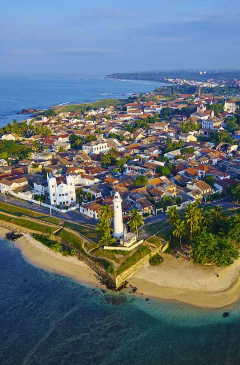
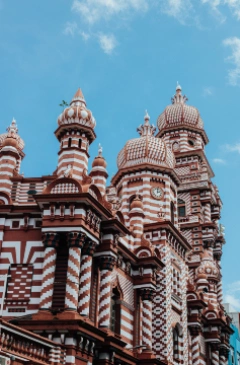
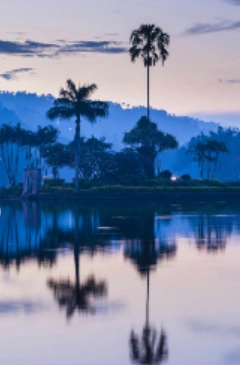
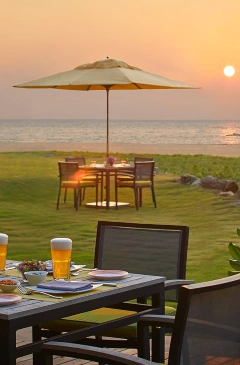



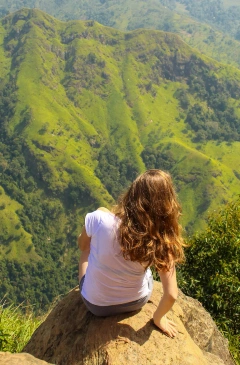
SriLankan.com uses cookies and 3rd-party services to offer you a better, more personalized, browsing experience with advanced accessibility enhancements. By continuing to browse SriLankan.com you agree to SriLankan Airlines Terms of Use, Cookie Policy Privacy Policy.